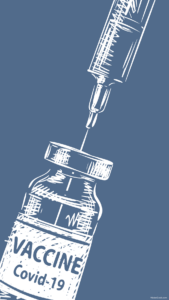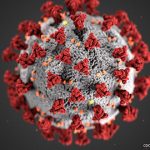The average age of patients with IRMD was 58, and more than two-thirds (68%) were women.
Most patients had inflammatory joint disease (71%), followed by connective tissue disease (18%), vasculitis (9.9%) and other IRMDs (1.7%). Nearly two-thirds of IRMD primary diagnoses were rheumatoid arthritis (36%), axial spondyloarthritis (16%) and psoriatic arthritis (12%).
Methotrexate was the most common individual medication used, followed by glucocorticoids and TNF inhibitors. DMARDs were the most frequently used medication groups, followed by immunosuppressants.
Most patients—just over 82%—received two doses of a vaccine, and 18% of patients received one dose. The Pfizer/BioNtech COVID-19 vaccine was the most common administered among patients in the study, with 74.1% receiving two doses and 42.8% one dose. AstraZeneca and Moderna vaccines were the second and third most common in the study, respectively.
The Results
Among the 7,336 patients with IRMD, 272 (3.7%) suffered flares, according to the study. Even fewer patients, 121 (1.6%), had flares that required additional treatment with either new medication or increased dosage of medication prescribed before vaccination. Key factors associated with decreased odds for flares included:
- Patients of higher age;
- Vaccines other than the brands Pfizer, AstraZeneca and Moderna; and
- Treatment with medications methotrexate and rituximab vs. no anti-rheumatics.
The authors note that the number of other vaccines was small, so the above result related to brands should be interpreted with caution.
 “Importantly, we found that higher disease activity and cessation/reduction of anti-rheumatic medications before or after vaccinations were associated with increased probability of flare, both for flares in general as well as for flares requiring starting a new anti-rheumatic medication or change of dose in current medication,” state the authors.
“Importantly, we found that higher disease activity and cessation/reduction of anti-rheumatic medications before or after vaccinations were associated with increased probability of flare, both for flares in general as well as for flares requiring starting a new anti-rheumatic medication or change of dose in current medication,” state the authors.
“This finding highlights the importance of IRMD control when considering vaccination,” says Dr. Machado.
Researchers did not find an association between the type of IRMD and the risk of flare after vaccination. “This suggests that other factors, such as level of disease activity and medication, are driving the risk of flare, rather than the specific IRMD,” says Dr. Machado.
Flares were more likely to occur in younger patients and females, but such associations were only seen for flares in general and not those that required starting a new anti-rheumatic medication or dose change in current medication, states the study article.
“Therefore, these associations were less robust,” notes Dr. Machado. “The reasons for an association with female sex are unclear, but could be related [to] hormonal factors, while the association with younger age could be related to a more exuberant immunological response to the vaccine.”



